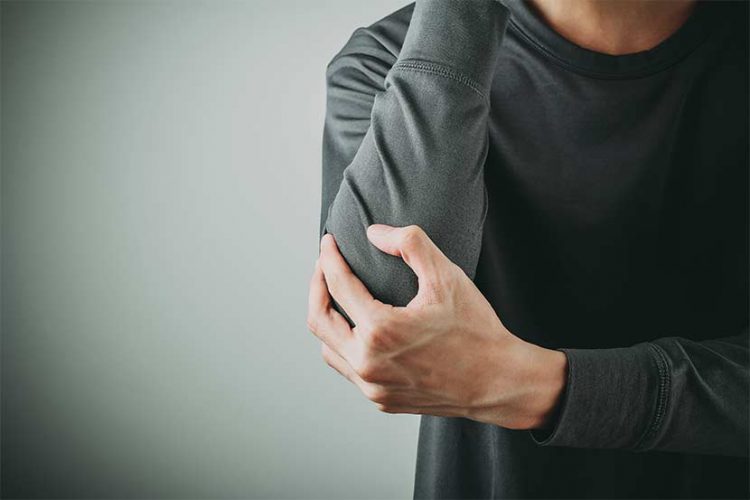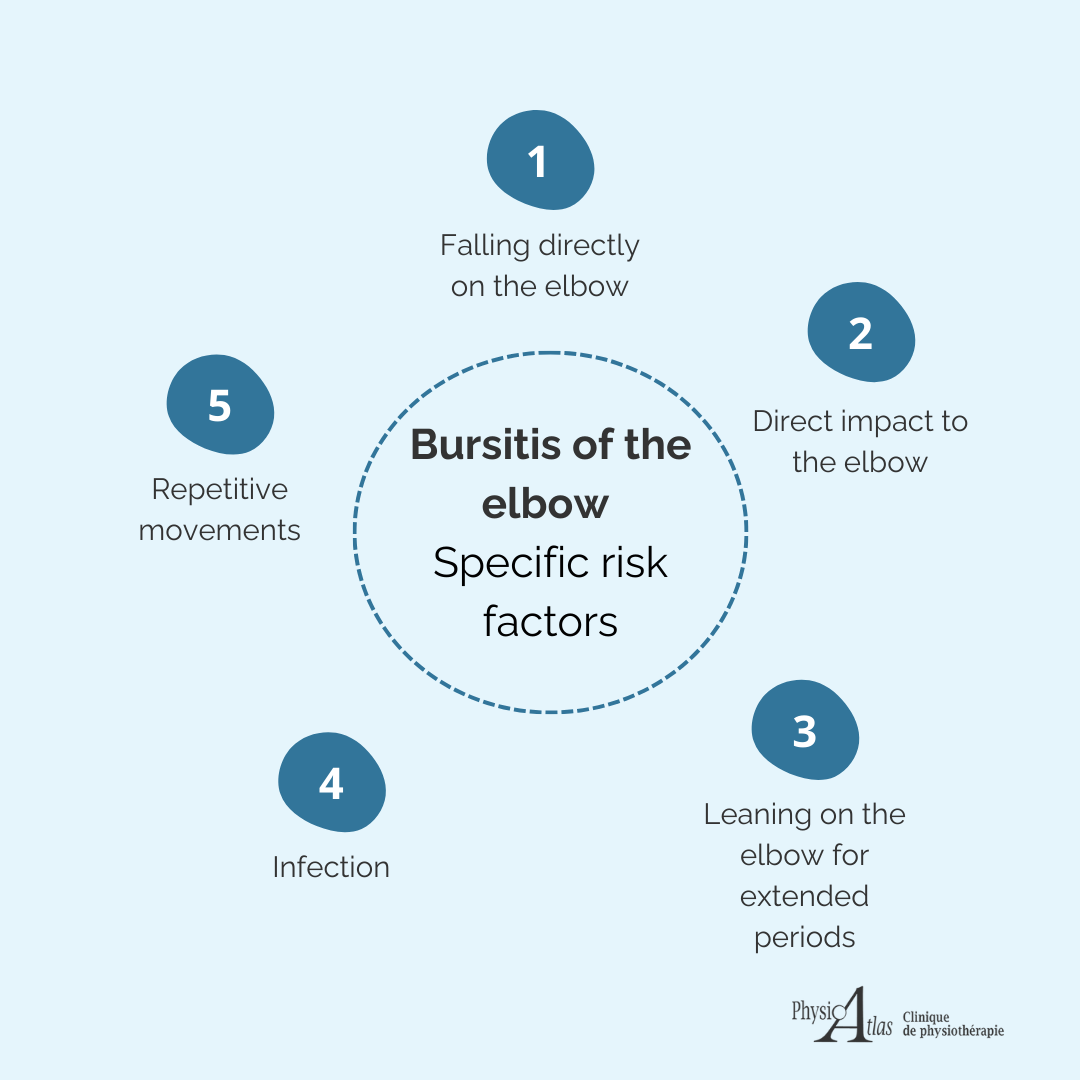
Bursitis of the elbow: trauma or not, it sure hurts!

Anatomy of the elbow
The elbow is a joint where 3 bones connect: the humerus (upper arm), and the radius and the ulna (forearm). The biceps are primarily responsible for folding the elbow, while the triceps allow it to extend.There are also ligaments that stabilize the joint, nerves that carry electrical current, and a bursa that lubricates the joint. This lubrication protects the tendons and cartilage. The olecranon bursa is located at the tip of the elbow, and has very little protection (muscles or fat). This means that it is highly susceptible to injury and irritation.
Bursitis 101
As we described in our column on hip bursitis, when a bursa is inflamed or infected, it releases the lubricating liquid it contains, spreading inflammatory substances in the process. This leads to the swelling, pain and ankylosis chracteristic of bursitis.
Specific risk factors for the elbow
There are several potential causes for this condition. It can develop as the result of trauma (either from compression or stretching) or infection. Here are the key risk factors:
- Falling directly on the elbow, on ice or while exercising;
- Direct impact to the elbow during daily activities or exercise;
- Leaning on the elbow for extended periods during office work, on public transportation, or lying on one side;
- Infection caused by a lesion in the skin;
- Repetitive movements that cause the tendons surrounding the bursa to rub (elbow extension).
In short, any unusual or repetitive stress over a long period of time can cause a bursa to become inflamed.
How is it diagnosed?
The main symptoms are:
- Swelling of the olecranon (the tip of the elbow). Often reaching the size of a ping pong ball;
- Redness and warmth;
- Pain with elbow movement or compression;
- Ankylosis;
- Loss of muscle mass over time when bursitis is left untreated.
Treatment
The first step is to reduce inflammation with an anti-inflammatory medication, ice and rest. Your physiotherapist may also use other treatments:
- Ultrasound: reduces swelling, calms inflammation and heals tissue;
- Physical therapy: treats ankylosis, reduces swelling and allows the joint to lubricate without creating further damage;
- Kinesiology tape: reduces swelling;
- Muscle work – massage: reduces compensatory muscle strain;
- Exercises: strength training, stretching and self-massage treat ankylosis, rebuild muscle strength and help drain swelling, in addition to limiting the formation of scar tissue.
If there are signs of infection, such as fever, your doctor or pharmacist can help you.
In conclusion, bursitis of the elbow isn’t something to ignore. It needs to be treated promptly and appropriately. A poorly healed bursitis can cause long-term muscle atrophy and stiffness. It can also lead to repeated bursitis flare-ups, or even the development of elbow tendinitis.



